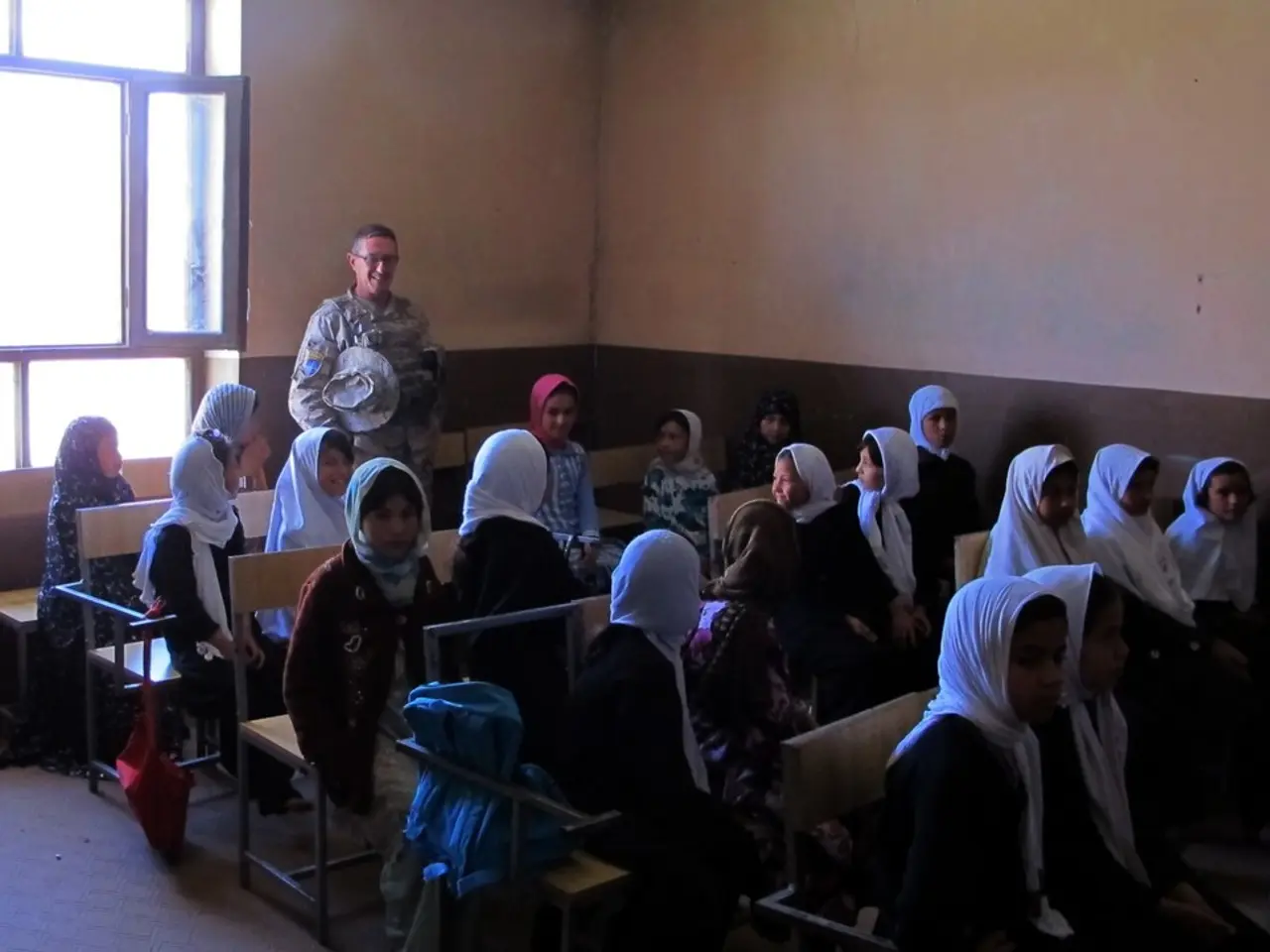Establishing Healthy Limits: Crucial Methods for Educational Settings
In the realm of education, the significance of healthy boundaries cannot be overstated. These boundaries, when established and respected, foster emotional stability, resilience, and a supportive environment conducive to personal growth and academic success.
Schools play a crucial role in promoting healthy boundaries. Strategies such as curriculum integration, educator training, peer mediation programs, and supportive policies are being implemented to encourage clear communication, emotional resilience, social-emotional learning, and strong school-community partnerships.
Clear communication and consistency are key. Educators should clearly communicate limits and expectations to students, consistently enforce boundaries, and be open to feedback and adjustments. This helps students understand acceptable behaviors and learn to respect limits, building trust and safety in the educational environment.
Self-reflection and teaching autonomy are also essential. Encouraging both educators and students to engage in self-reflection helps identify personal needs and boundaries, supporting students’ developing sense of self and personal identity, crucial for maintaining healthy boundaries.
Incorporating mindfulness practices can also build self-awareness and emotional regulation. Simple, age-appropriate mindfulness exercises, such as breathing techniques or gratitude journaling, help students manage stress and respect their own boundaries and those of others.
Promoting positive social interactions is another strategy. Creating a classroom culture that values collaboration, kindness, inclusivity, and empathy promotes healthy peer relationships. Structured group activities and team-building exercises support students in practicing respect and boundary-setting in social contexts.
Social-emotional learning (SEL) check-ins, like daily check-ins or greeting-choice boards, allow students to exercise autonomy over their personal space and body boundaries, reinforcing consent and respect through routine interactions.
Schools can strengthen boundary support and student well-being by partnering with mental health providers and community organizations. This enables early identification of mental health concerns, trauma-informed practices, safe spaces, and coordinated care addressing both academic and emotional needs.
Addressing challenges in boundary maintenance is also important. Educators should help students and themselves overcome feelings of guilt or resistance about setting boundaries by practicing assertiveness, preparing for varied reactions, and reinforcing the reasons behind boundaries.
Parents also play a pivotal role in establishing boundaries that promote student well-being. They can do this by modeling healthy behaviors, setting clear expectations, communicating effectively, and participating in school activities.
Effective peer support programs offer a safe space for communication, making students more aware of their own boundaries while developing empathy for others' experiences. These programs involve student mentors or peers assisting fellow students in navigating personal and academic challenges.
Through participation in peer support programs, students learn to set and respect boundaries, build resilience, and improve interpersonal skills. Creating an environment that fosters student awareness of boundaries is vital for enhancing their overall well-being through workshops, seminars, and peer support programs.
In conclusion, healthy boundaries contribute to students' emotional resilience by helping them define acceptable behavior in their interactions, reducing anxiety, and fostering a supportive environment in educational settings. Establishing clear personal limits helps students gain a sense of control over their interactions and environments, empowering them to make informed decisions. By implementing these strategies, we can create a comprehensive approach that respects individual limits, fosters emotional resilience, encourages healthy interactions, and ensures access to mental health resources, thereby enhancing student well-being and academic success.
In light of the importance of healthy boundaries in academic success and personal growth, professional development programs for educators can incorporate strategies to enhance social-emotional learning (SEL), such as integrating e-learning modules on personal-growth topics, including boundary-setting and emotional resilience. This could further facilitate educators' understanding of the role that self-awareness and autonomy play in adopting effective interactive practices using educational technology (e-learning) within the scope of education-and-self-development.
To further cultivate students' emotional resilience and foster their ability to respect and navigate boundaries in personal and social contexts, schools might implement mentorship or peer support programs that incorporate regular SEL check-ins and discussing personal-growth topics, such as effective communication, self-reflection, mindfulness, and empathy. These programs provide a platform for students to develop their skills in self-awareness, empathy, and interpersonal interactions, promoting the overall well-being and academic success of the students.




